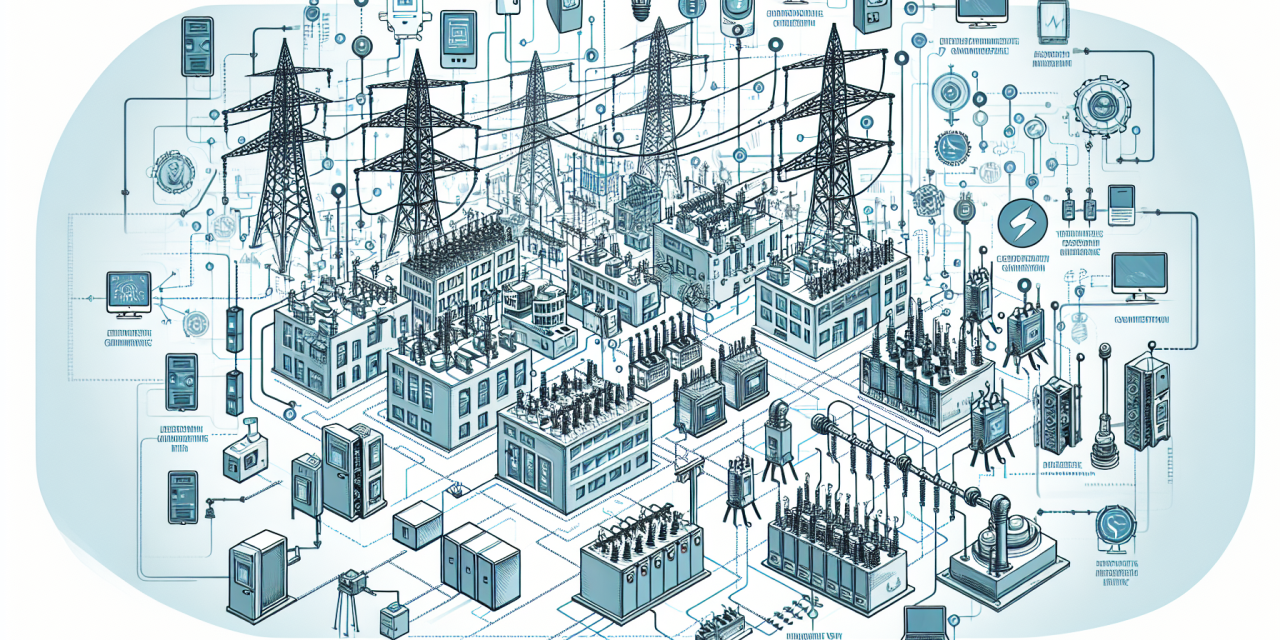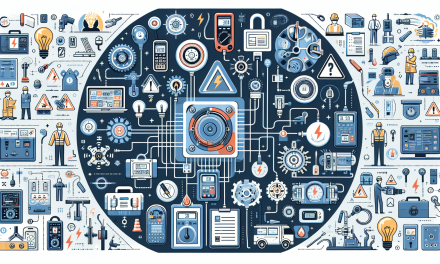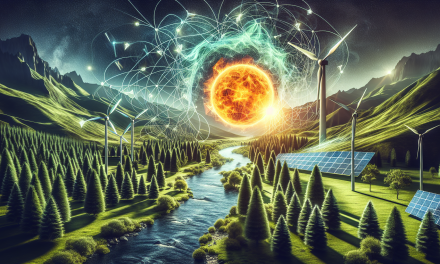- Introduction
- What is a Smart Grid?
- Benefits of Smart Grids
- Key Features of Smart Grids
- Applications of Smart Grids
- The Future of Smart Grids
- Challenges in Implementing Smart Grids
- FAQs
- Conclusion
Introduction
As technology rapidly evolves, the world of energy management is following suit. One of the most important advancements in this arena is the emergence of smart grids. Unlike traditional electrical grids, smart grids utilize advanced technology to enhance the delivery and management of electricity. However, understanding smart grids doesn’t require an engineering degree. By delving into this topic, you will discover that knowledge about smart grids opens crucial doors to efficiency and sustainability in energy use.
What is a Smart Grid?
A smart grid represents an upgraded electrical grid that employs digital technology to monitor and manage the transport of electricity from all generation sources. This system integrates traditional energy sources with innovative renewables while ensuring the seamless flow of information between consumers and providers. Notably, smart grids embody two significant elements—enhanced communication technology and improved sensors.
How Do Smart Grids Work?
Smart grids enhance the traditional power system by incorporating various technologies, such as smart meters, sensors, and communication networks. Similar to how the internet enhances communication among people, smart grids facilitate better communication between utilities and energy users. When electricity is transported through smart grids, real-time data flow allows for instant responsiveness, which benefits consumers and utilities alike.
Benefits of Smart Grids
Transitioning to a smart grid offers several advantages, empowering both consumers and energy providers. Here are some of the most notable benefits:
1. Enhanced Reliability
Smart grids significantly reduce power outages. For instance, if one part of the grid experiences issues, the system can isolate the problem area, rerouting power efficiently and quickly. This effective management minimizes downtime and enhances the overall reliability of energy supply.
2. Improved Efficiency
Smart grids increase the efficiency of energy generation and distribution. For example, they allow for real-time monitoring of energy supply and demand, meaning that providers can optimize energy distribution for peak hours and reduce waste during off-peak periods.
3. Renewable Energy Integration
Due to their digital nature, smart grids seamlessly incorporate renewable energy sources, such as wind and solar. This integration is vital for countries aiming to transition to sustainable energy solutions since it allows for a more flexible approach to power generation.
4. Consumer Empowerment
Through smart technologies, consumers gain greater insight into their energy usage. Smart meters, for example, provide detailed information about energy consumption patterns, which empowers individuals to make informed decisions regarding their usage habits. Consequently, enhanced consumer education leads to energy conservation and reduced costs.
Key Features of Smart Grids
Understanding the integral features of smart grids further elucidates their importance in modern energy management. Some key components include:
1. Smart Meters
These advanced meters provide real-time data on energy consumption, allowing consumers to track usage patterns effectively. They enable two-way communication between consumers and utility companies, which plays a vital role in making informed decisions.
2. Automated Control Systems
Utilizing advanced software, automated control systems optimize the flow of electricity, ensuring it reaches the right destination at the right time. This technology helps prevent overloads and reduces the need for manual intervention.
3. Advanced Sensors
Sensors detect fluctuations in energy supply and demand. By providing utilities with continuous data, these sensors enhance the reliability and efficiency of the power system.
Applications of Smart Grids
Smart grids serve various applications that demonstrate their versatility in energy management:
1. Demand Response Programs
Smart grids facilitate demand response programs, which encourage consumers to reduce or shift their energy usage during peak times. By emphasizing sustainability and reducing strain on the grid, these programs benefit both consumers and utility providers.
2. Electric Vehicle Integration
As electric vehicles (EVs) become more prevalent, smart grids support the integration of EV charging. Leveraging smart technology, grid operators can manage charging based on demand and supply, preventing potential grid overloads.
3. Microgrids
Microgrids, localized grids that can operate independently or in conjunction with the main grid, leverage smart grid technology to enhance energy reliability. These systems boost resilience, particularly in remote areas or during natural disasters when larger grids may fail.
4. Smart Home Technologies
Smart grids enable the implementation of smart home technologies, such as automated thermostats and energy-efficient appliances. These technologies contribute to energy savings and promote environmentally friendly practices.
The Future of Smart Grids
As the world continues to embrace renewable energy and smarter technologies, the future of smart grids looks promising. Innovations such as artificial intelligence (AI) and machine learning are gradually transforming the way smart grids operate. By utilizing data analytics, these technologies can predict energy demands and improve systems’ overall functionality.
Investments and Innovations
In addition, substantial investments in smart grid technologies will likely continue, encouraging further developments. Energy providers and governments are increasingly recognizing the long-term benefits of smart grids and their crucial role in achieving sustainability goals.
Challenges in Implementing Smart Grids
While the advantages of smart grids are clear, their implementation also faces several challenges:
1. High Initial Costs
Transitioning from traditional grids to smart grids requires significant upfront investments. Upgrading infrastructure and employing advanced technologies can be costly, but the long-term savings often outweigh these initial expenditures.
2. Cybersecurity Concerns
Increased connectivity raises concerns regarding cybersecurity. Protecting sensitive data and preventing potential cyberattacks is paramount as smart grids become more integrated and reliant on digital technology.
3. Regulatory Hurdles
The implementation of smart grids often faces regulatory challenges, as the infrastructure must align with existing standards and policies. Creating a comprehensive regulatory framework involves collaboration between various stakeholders, including government agencies and utility companies.
FAQs
What makes smart grids more advanced than traditional ones?
Smart grids leverage cutting-edge technology to enhance communication, increase efficiency, and promote real-time monitoring, unlike traditional grids that often rely on outdated infrastructure.
How do consumers interact with smart grids?
Consumers can interact with smart grids through smart meters, which provide detailed information about their energy usage. This two-way communication empowers individuals to manage their consumption effectively.
Are smart grids environmentally friendly?
Yes, smart grids facilitate the integration of renewable energy sources, reduce energy waste, and enhance energy efficiency, making them more sustainable and environmentally friendly.
Where can I learn more about smart grids?
For anyone interested in deepening their understanding of smart grids, the Smart Grids for Non-Engineers Certification Course provides excellent resources.
Conclusion
In summary, smart grids represent the foundation of our energy systems’ future. Transitioning to a smart energy infrastructure leads to numerous benefits, emphasizing reliability, efficiency, and sustainability. Moreover, although challenges exist, the advantages significantly outweigh the hurdles. Particularly, understanding the dynamics of smart grids empowers consumers and promotes energy independence. To explore various dimensions of modern energy management, consider reading about related topics like modern electrical power systems, centrifugal compressors and steam turbines, and cooling towers. Furthermore, understanding issues of reliability in electric power systems can significantly enhance your comprehension of this field; you can read more about it here. Lastly, grasping energy efficiency through audits and management training is worthwhile; more details can be found here. Embracing these advancements step-by-step will lead us towards a brighter, more sustainable energy future.





